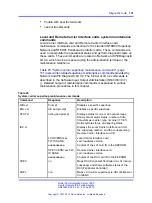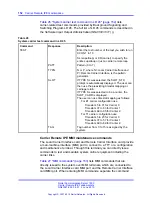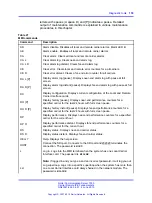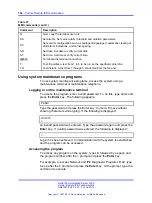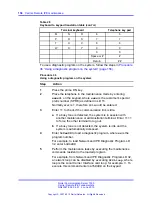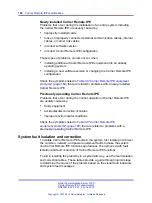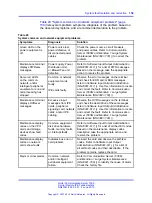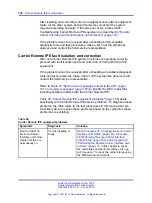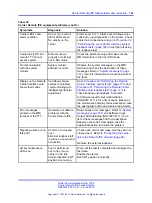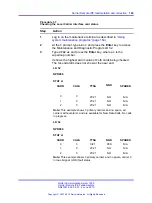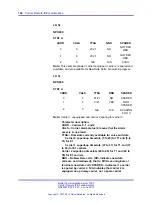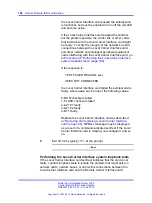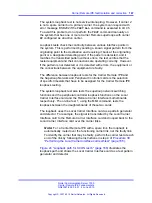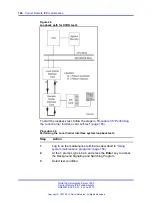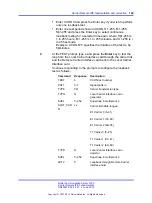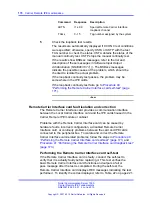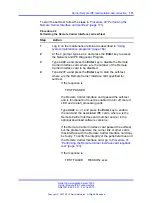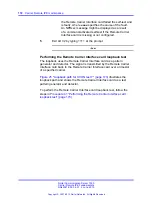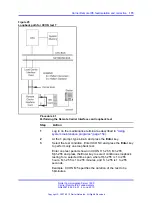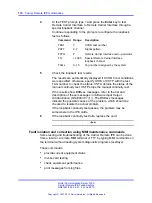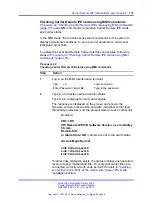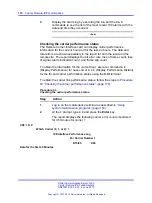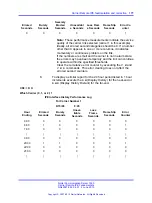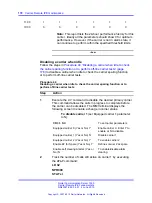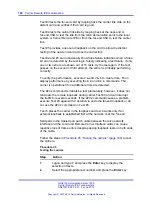
Carrier Remote IPE fault isolation and correction
165
If carrier 2 is configured as a spare, the traffic is handled
by carrier 0 and carrier 1 reducing the traffic capacity to
2/3; by providing a spare, established calls are protected
if one of the primary carrier links fails.
Note: If overload conditions are indicated by OVDxxx
messages, refer to Software Input Output Administration
(NN43001-611) () for the message description and indication
of the problem.
4
If the message indicates that the Local Carrier Interface card is
faulty, replace the card.
--End--
Performing the Local Carrier Interface card self-test
If the Local Carrier Interface card is faulty, conduct the self-test to verify
that it is actually faulty before replacing it. This test verifies the basic Local
Carrier Interface card functions and outputs a fail or pass message after
the test is completed.
To start the self-test, follow the steps in
Local Carrier Interface card self-test” (page 165)
Procedure 38
Performing the Local Carrier Interface card self-test
Step
Action
1
Log in on the maintenance terminal as described in
system maintenance programs” (page 154)
2
At the > prompt, type
LD 32
and press the Enter key to access
the Network and IPE Diagnostic Program.
3
Type
DISL sl
and press the Enter key to disable the Local
Carrier Interface card, where
sl
is the Local Carrier Interface
card superloop number to be disabled.
4
Type
XNTT sl
and press the Enter key to start the self-test,
where sl is the Local Carrier Interface card superloop number
specified for the self-test.
If the response is:
TEST PASSED
Nortel Communication Server 1000
Carrier Remote IPE Fundamentals
NN43021-555 04.01
4 June 2010
Copyright © 2007-2010 Nortel Networks. All Rights Reserved.
.
Summary of Contents for Communication Server 100
Page 213: ......

